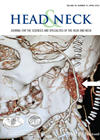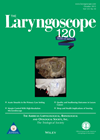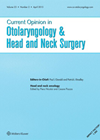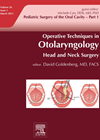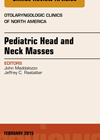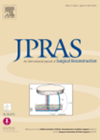
Journal Reviews
Extrapolating lessons from vestibular schwannoma management
This paper presents a delightfully simple and sensible hypothesis for the management of benign schwannomas in the head and neck region. They have taken the approach used for the management of vestibular schwannomas and used the same principles to assess...
Best timing for post-treatment PET-CT scans in head and neck cancer
Unfortunately we know that the recurrence rate for head and neck cancer can be high, up to 30-50% in some series. These recurrences tend to occur within the first two years following treatment. Optimal surveillance strategies to detect recurrences early...
Carotid artery involvement with head and neck metastases
This is a retrospective review of 27 patients radiologically diagnosed as having metastases involving the common or internal carotid arteries. All patients underwent a salvage neck dissection with surgical carotid peeling. Thirteen of the 27 achieved loco-regional control, five developed...
An overview of microsurgical reconstruction of the head and neck worldwide
Microsurgical reconstruction is an integral part of the treatment following ablation for malignancy or trauma. Currently there are no clear treatment guidelines following tumour resection. This was recognised a few years ago and in 2008 various collaborative groups were founded...
Margin control using optical techniques in head and neck surgery
Emerging optical techniques such as high-resolution microendoscopy (HRME) are currently being examined for their reliability in discriminating benign from neoplastic epithelium. These techniques may offer the potential to detect the margin of an upper aerodigestive tract tumour in a non-invasive...
A new free flap for the head and neck?
Reconstruction of major defects in the head and neck is usually an area where maxillofacial or plastic surgery colleagues come to assist, with consideration of the size and function any repair has to fulfil. Whilst the radial forearm free flap...
Management of the neck in maxillary sinus carcinomas
Primary malignant tumours of the sinonasal tract account for less than 10% of head and neck cancers, of which the maxilla is the second most common subsite and squamous cell carcinoma (SCC) is the most prevalent histological type. Maxillary SCCs...
Approaching a ranula
The March issue of Operative Techniques in Otolaryngology is the first of two concentrating on oral surgery within the paediatric setting. It sets the scene with a paper on the anatomy of the paediatric oral cavity and the associated surgical...
Paediatric salivary gland tumours
This is a review article of a rare group of neoplasms that frequently present as painless preauricular mass in older children. There is a wide differential including first branchial arch abnormalities, inflammatory and granulomatous processes. Those masses that are painless,...
Multiple free flaps for head and neck cancer
Most patients with advanced head and neck cancers now undergo microvascular free flap reconstruction. This is mainly as flaps facilitate complete tumour and margin removal by providing reliable wound coverage and better restoration of form and function. However despite this,...
Are biofilms present in deep neck abscesses?
Why are some cervical abscesses resistant to antibiotic treatment? The authors postulate that a biofilm develops to allow the bacteria to overcome normal host defences. They investigated the micro-environment of deep neck abscesses in a largely paediatric cohort. Biopsies of...


